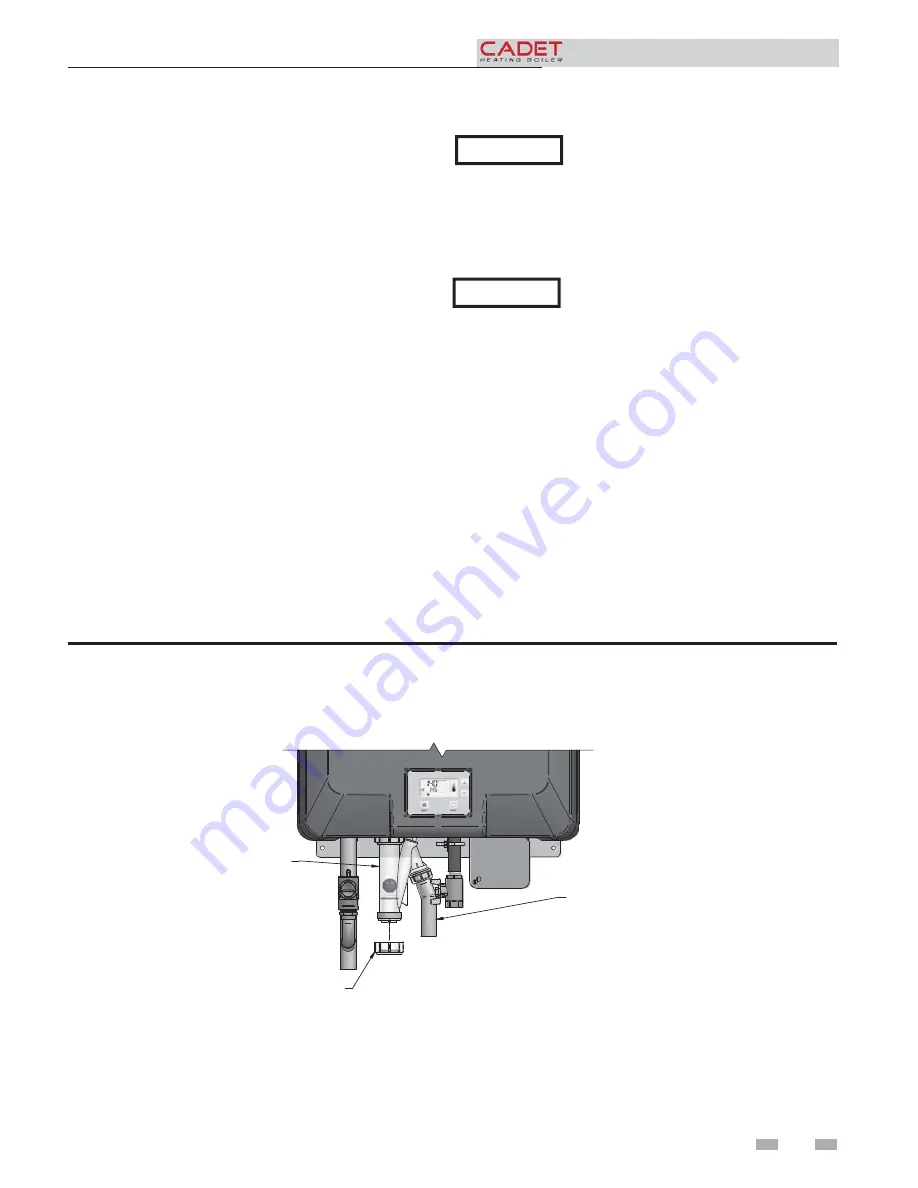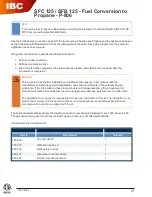
51
9
Condensate disposal
Condensate drain
1. This boiler is a high efficiency appliance that produces
condensate.
2. The bottom of the boiler has a 3/4 inch pipe for connection
of a 3/4 inch PVC pipe (FIG. 9-1).
3. Slope condensate tubing down and away from the boiler
into a drain or condensate neutralizing filter. Condensate
from the Cadet heating boiler will be slightly acidic
(typically with a pH from 3 to 5). Install a neutralizing
filter if required by local codes.
A Neutralizer Kit is available from the factory (KIT3087).
4. Do not expose condensate line to freezing temperatures.
5. Use only plastic tubing or piping as a condensate drain
line (FIG. 9-1).
Use materials approved by the authority
having jurisdiction. In the absence of other
authority, PVC and CPVC pipe must comply
with ASTM D1785 or D2845. Cement and
primer must comply with ASME D2564 or
F493. For Canada use CSA or ULC certified
PVC or CPVC pipe, fittings, and cement.
6. A condensate removal pump is required if the boiler is
below the drain. When installing a condensate pump, select
one approved for use with condensing boilers and furnaces.
The pump should have an overflow switch to prevent
property damage from condensate spillage.
NOTICE
NOTICE
To allow for proper drainage on large
horizontal runs, a second line vent may be
required and tubing size may need to increase
to 1 inch.
The condensate line must remain
unobstructed, allowing free flow of
condensate. If condensate is allowed to
freeze in the line or if the line is obstructed in
any other manner, condensate can exit from
the boiler tee, resulting in potential water
damage to property.
CONDENSATE TRAP
REMOVABLE CAP
FOR CLEANING TRAP
CONDENSATE DRAIN CONNECTION -
ROUTE TO FLOOR DRAIN OR
NEUTRALIZING FILTER USING:
3/4" PVC PIPE & FITTINGS or
3/4" CPVC PIPE & FITTINGS
(FIELD SUPPLIED)
IMG00248
Figure 9-1 Condensate Disposal
Installation & Service Manual
















































